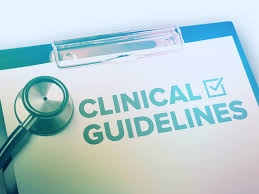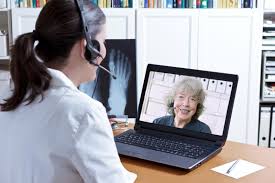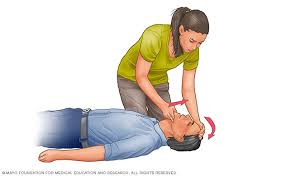
Reflection and Assimilation
Order Instructions:
This paper is a summary of all the nursing papers you guys have written for me for the past weeks so it will make sense if the same writer complete this reflection also by going back and using all the resources of the previous papers to complete this paper. the writer should pay close attention to all the requirements and respond to all the questions. It requires a minimum of 7 paragraphs in 4 pages.
Reflection and Evaluation
Reflect upon your new knowledge about nursing research and EBP. Explain how this new knowledge will influence your daily practice? What was your most significant learning? What assignment did you find the most and least meaningful to your understanding of research and EBP? Did you meet the course outcomes?
Your role as an advanced practice nurse is paramount in nursing research. You will be examining studies for evidence which can be taken to the bedside. Without nurses prepared for this, the research-practice gap will continue to widen. You have learned how to generate research questions, whether they are from practice or from the literature. You have learned about various research methodologies, both quantitative and qualitative. Over the weeks, you have analyzed nursing research studies, both quantitative and qualitative. You have touched on collaborative research efforts. You have been introduced to legal and ethical principles in research. You have investigated a clinical guideline and applied it to a practice setting.
Now for the big question: can you now use research to improve practice? Are you able to take the evidence you find in the literature and translate it into practice guidelines which staff nurses will be willing to adopt? Only you can answer this important question.
This paper provides you with an opportunity to reflect on what you have learned during the course. To accomplish this, please create a minimum 7 paragraph written reflection of your personal learning achievements and professional growth as a result of this course. Remember that a paragraph cannot be less than 5 sentences, and it is important that all details be included in this paper as it clearly will demonstrate what you have understood in this course. Use the guidelines below to do your evaluations.
1. Evaluate personal learning achievements pertaining to each course outcomes:
1: Evaluate quantitative research studies through systematic examination of all aspects of a nursing research study.
2: Apply research findings from quantitative studies to nursing practice.
3: Evaluate qualitative research studies through systematic examination of all aspects of a nursing research study.
4: Apply research findings from qualitative studies to nursing practice.
5: Evaluate the body of evidence from nursing research in order to support an evidence-based change in nursing practice.
6: Create a plan for application of evidence to current nursing practice.
7; Reflect on how the learning you achieved in this course will support your success in the final course when you will develop a written evidence-based proposal for a change in nursing practice.
SAMPLE ANSWER
Reflection and Assimilation
Considering all the knowledge gained over the course of the research project, I can effectively utilize research to improve nursing practice. In essence, I am able to take the evidence which I find in literature and then translate it into practice guidelines that nursing staff would be willing to adopt. I have been able to achieve each of the course outcome. These are described below.
I have gained ability and competence to evaluate quantitative research. As a result of the research conducted, I am able to evaluate various quantitative research studies through systematic examination of all aspects of a nursing research study. I am able to effectively assess and critique various quantitative research approaches such as cross-sectional design. I am also able to evaluate grounded theory type of quantitative research, whose purpose is theory development. Moreover, I am able to evaluate ethnography research studies which describe the characteristics of a culture (Beck, 2013). Equally important, I can properly evaluate quantitative case studies, which describe in an in-depth manner the experience of an institution, a community, a group, a family or an individual. When evaluating quantitative research studies in nursing, I have learned the importance of bearing in mind the sampling and data collection methods utilized by the researcher, the variables of the study, the research questions formulated, validity and reliability of data, as well as outcomes of the research.
I have gained the ability to apply research findings from quantitative studies. The research has enabled me to use the findings of quantitative research as evidence in nursing practice. The new evidence gained from quantitative studies could be utilized by managers and decision makers in healthcare organizations to solve challenges they experience within their healthcare facilities, and to improve patient care (Aveyard & Sharp, 2013). In essence, I am now able to understand the utility and meaning of quantitative research results and how they can serve as vital evidence for nursing practice changes. Before the findings of quantitative research can be applied, it is imperative to determine if those findings are valid (Jacelon & O’Dell, 2005). In this regard, thanks to this research, I am now able to determine the validity of quantitative research findings before applying them.
I have also gained the ability and competence to evaluate qualitative research studies. Qualitative research is basically understood as a method of inquiry where the investigator, acting as an instrument for the collection of data, seeks to answer questions regarding why or how a given phenomenon happens (Holloway & Wheeler, 2013). I can properly evaluate several qualitative research designs in nursing research including ethnography, phenomenology, grounded-theory, as well as qualitative description. To evaluate whether or not a particular qualitative study in nursing research is useful, I have learned to critically appraise qualitative research in terms of validity and thoroughness. The main areas to consider when evaluating the qualitative research include: if the research question is clear and substantiated sufficiently; and if the design is apt for the research question. Others are if the sampling method was apt for the research design and research question; if data was gathered and managed in a systematic way; if data analysis was apt; and if the description of findings is thorough.
I have gained the ability to apply research findings from qualitative studies. The research has allowed me to be able to properly understand how I can apply the qualitative research findings by asking several questions, such as what relevance and meaning does the qualitative study have for my practice? The question of what meaning could be made of the findings would have to be examined (Smith & Firth, 2011). The study should produce usable knowledge. The other questions are: does the qualitative research study assist me in understanding the context of my practice? and, does the qualitative research study enhance my knowledge regarding my particular practice? I have been able to understand the generalizability of qualitative findings, considering that findings from qualitative findings are not always generalisable (Holloway, Wheeler & Holloway, 2013).
The project has enhanced my skills of evaluating the body of evidence from nursing research. This research has, to a great extent, helped me to improve on my capability to evaluate the body of evidence from nursing research as regards the subject matter in order to support an evidence-based change within nursing practice. This research project involved extensive review of existing literature on the subject matter with the aim of finding evidence to use to support evidence-based change. It is of note that evidence-based practice is a vital approach in providing the best quality care to patients, as well as the patients’ families. Nursing practice which is based on evidence improves patient outcomes and helps to reduce uncertainty usually experienced by healthcare personnel and their patients alike (Boswell, Boswell & Cannon, 2014). Because of this research project, I can clearly distinguish literature that is based on evidence from traditional literature not based on evidence. In essence, this project has enhanced my ability to systematically search for the most relevant, pertinent and current evidence, and to critically appraise this evidence in order to answer a clinical question. Conducting research helps in providing the essential evidence on which to base nursing practice (Melnyk & Fineout-Overholt, 2011).
The plan for the application of evidence to the current nursing practice entails the following: (i) disseminating the evidence. Evidence would be disseminated through various mediums such as press releases in local newspapers, television and radio stations; publications in recognized journals such as New England Journal of Medicine, Science Journal, and Nature Journal; websites. Dissemination will also take place using posters and flyers; oral presentations; as well as organization/hospital-based and professional committee meetings. The evidence will be disseminated with the aim of reaching the wider nursing community who will apply the evidence-based practice. (ii) Encouraging nurses and other healthcare professionals to adopt and implement the evidence-based practice in their daily practice at their workplace in order improve patient care and safety, and reduce injury or death from falls. (iii) Managing and overcoming any barriers and resistance to adopting the evidence-based practice, for instance by providing training (Giuliano & Polanowicz, 2008).
The learning which I have achieved in this course will support my success in the final course when I will be required to develop a written evidence-based proposal for a change in nursing strategy. This is primarily because I will be better positioned and adequately prepared to develop the written evidence-based proposal for a change in nursing practice considering that I would have already conducted the research project and gained the evidence necessary to write the proposal for an evidence-based practice. This research project has given me the essential information, knowledge and necessary evidence on which to base nursing practice. The learning I attained in this course has improved my knowledge and widened my understanding on the evidence-based nursing practice. This will certainly support my success significantly in the final course when in will develop a written evidence-based proposal for a change in nursing practice.
References
Aveyard, H., & Sharp, P. (2013). A Beginner’s Guide To Evidence-Based Practice In Health And Social Care. Maidenhead: McGraw-Hill Education.
Beck, C. T. (2013). Routledge international handbook of qualitative nursing research. Abingdon: Routledge.
Boswell, C., Boswell, C., & Cannon, S. (2014). Introduction to nursing research: Incorporating evidence-based practice. Burlington, MA: Jones & Bartlett Learning
Giuliano, K., & Polanowicz, M. (2008). Interpretation and use of statistics in nursing research. AACN Advanced Critical Care, 19(2), 211–222
Holloway, I., & Wheeler, S. (2013). Qualitative Research in Nursing and Healthcare. Chicester: Wiley.
Holloway, I., Wheeler, S., & Holloway, I. (2010). Qualitative research in nursing and healthcare. Chichester, West Sussex, U.K: Wiley-Blackwell.
Jacelon, C., & O’Dell, K. (2005). Demystifying nursing research. Analyzing qualitative data. Urologic Nursing, 25(3), 217–220.
Melnyk, B. M., & Fineout-Overholt, E. (2011). Evidence-based practice in nursing & healthcare: A guide to best practice. Philadelphia: Wolters Kluwer/Lippincott Williams & Wilkins.
Smith, J., & Firth, J. (2011). Qualitative data analysis: the framework approach. Nurse Researcher, 18(2), 52–62.
We can write this or a similar paper for you! Simply fill the order form!












